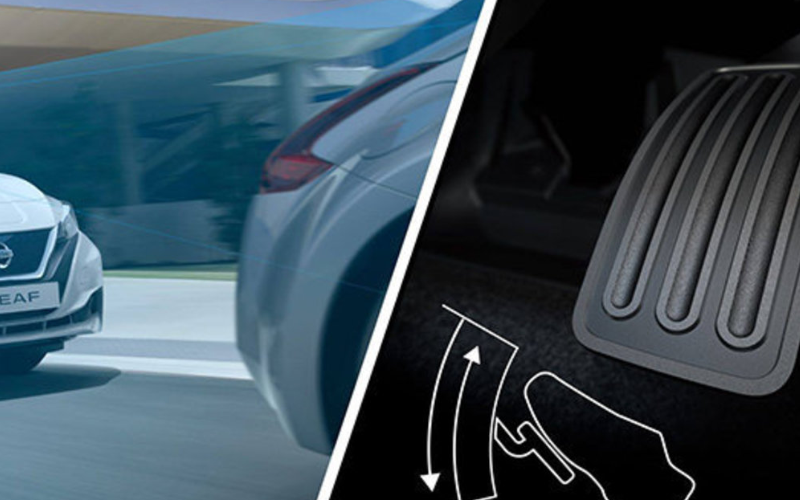Part and parcel of owning and operating a car in the US is being insured to do so. The trouble is that it can be very hard to know just which kind of insurance to buy and from what provider. The marketplace is full of choice, which is good for consumers, but it’s also full of strange terminology that can be confusing for first-time buyers, and even returning buyers who haven’t renewed their policy or provider for a very long time.
In today’s blog, we are looking at the world of auto insurance, and more importantly offering our tips and guidance on how to get the right kinds of car insurance and understand the differences between each one.
Types of Insurance
Broadly speaking, there are three types of car insurance to speak of, they are:
- Liability coverage
- Collision coverage
- Comprehensive coverage
There are quite a few other smaller types of coverage as well, but the vast majority of drivers in the US will have one of these three types, so we’ll cover those first.
1. Liability Coverage
This is the minimum level of insurance that most drivers need in order to legally operate their vehicles as an insured driver. What it does is cover you against any expenses that a third-party might claim against you after an accident or other incident for which you were responsible. It is actually fairly comprehensive in what it covers for third parties, including medical expenses, lost wages, damage to a vehicle or other property and more. The snag is that it doesn’t cover you personally. It’s purely a cover for when people claim against you.
2. Collision Coverage
Regardless of who was at fault, this kind of coverage will cover your vehicle for all necessary repairs that have to be done. That is to say, it will cover you for repairs that are required as a result of an accident. If your muffler is clinging on to life or you need a new engine out of sheer wear and tear, then this insurance is not paying for that. This one will also include coverage for damage to certain property such as trees and buildings, and quite possibly can afford you a replacement vehicle if yours is written off (or “totaled”) as a result of a collision.
3. Comprehensive Coverage
As the name suggests, this insurance covers you for all of the above-mentioned categories, plus can offer replacement vehicles for ones that are stolen or damaged in a hurricane, tsunami or other natural disaster.
4. Other Insurance Coverage Types
Besides these, there are a number of special insurance types that emerge depending on the circumstances of the customer, type of car and other factors. The above three are broad categories which may or may not offer some of the below coverage types as additions, or part and parcel of an insurance package.
Gap Coverage
This one is particularly common when people are leasing a car or buying with an auto loan instead of buying it in cash. The problem some people face is that in the event of an accident where a leased or otherwise financed car is totaled, the driver would be liable to the remaining cost of the car. In automotive financial terminology, this is defined as the residual value of the vehicle.
Imagine a scenario where you get into an accident, perhaps sometime during the second year of your particular finance arrangement. The payments that you have made so far might be worth a total of $6000 or so, but the car might have already depreciated by $7500 since you first got it. The residual value is calculated based on depreciation, and not by how much you’ve paid. Gap coverage is designed to bridge that gap and cover you against the difference. In the case above, if you totaled the car, then the gap insurance would provide you with that $1500 difference. If you didn’t have gap coverage, then you’d be liable for the difference.
Uninsured Coverage
This is a protection against those reckless souls who drive around out there without having insurance coverage. A 2017 study by the Insurance Research Council showed that as recently as 2015, about 13 percent of drivers (or about 1 in 8) on US roads was uninsured. That was up from 12.3 percent in 2010, which was the low point. However lucky you think you might be; those are not good odds at all.
Uninsured coverage will help pay for medical bills and possibly repairs to your vehicle if and when you are involved in an accident with one of these uninsured parties. It is also sometimes known as “underinsured” coverage, since it also helps where the third party’s liability limits are not enough to cover your costs like medical bills.
Medical Payments
As the name suggests, this type of coverage is just for covering the costs of any medical treatment required as a result of injury to you or one of your passengers after an accident. Some states actually require their drivers to carry this type of insurance.
Personal Injury Protection (PIP)
PIP is not the most widely available insurance types. If you are a driver in Delaware, Florida, Hawaii, Kansas, Kentucky, Massachusetts, Michigan, Minnesota, New Jersey, New York, North Dakota, Oregon or Utah, then you can get it. You may even need it by law. It’s also a coverage designed to assist with medical bills, but it actually goes a little further than that. PIP coverage also tends to extend to expenses that you have had to incur as a result of your injuries such as additional childcare, or income lost because you were unable to work, etc.
Towing and Labor Costs Coverage
The name of this coverage is quite accurately descriptive of what it covers. It provides things like towing, new tires, jump start assistance, gas delivery and help getting into a locked car for those times when you need it. This one isn’t used as much as in the case of accidents as it is in the case of roadside breakdowns.
Classic Car Insurance
When you’re insuring a car that is 40+ years old, you may have to get a special “classic car” insurance type to cover it. The detailed intricacies of classic car insurance are worthy of an entirely different blog, but basically there are some additional special considerations when it comes to classic cars. The insurance is still there to protect against accidents, fire, natural disasters, theft and whatnot in the same way other policies are. It will also include some additional conditions:
- Restrictions on usage: Depending on the car and what kind of coverage you want, there may be restrictions on how you can use it and how many miles you can take it each year. The insurance company may say, for instance, that the car can only be used for leisure. That would mean that you wouldn’t be protected if you were using the car to drive to work.
- Storage: There will likely be conditions on how the car is stored, both for its protection from theft, but also for its preservation against damage. Such storage conditions might include having a locked, covered garage, and perhaps even temperature controls.
Commercial Vehicle Insurance: Ridesharing
If you use a vehicle for business reasons, then you will need a special kind of insurance policy to cover that. For vehicles like vans, trucks and taxis, there are special policies that are very different from the kind of car insurance we are talking about in this blog.
One trap that drivers can fall into, however, is the problem of insurance if you decide to start earning extra money by driving for a ridesharing company like Uber or Lyft. There are some important things to remember, and we’ll use Uber’s coverage as an example.
Firstly, your conventional car insurance will not cover you for anything that happens while you’re using the car for commercial activities like Uber driving. If you intend to start driving for a rideshare company, then you need to be aware of when your personal insurance applies and when it does not. The good news is that these companies provide insurance as part of the deal with their drivers, so you likely won’t need to purchase any kind of separate policy like other commercial vehicle drivers would need.
This brings us to the second point, which is knowing when your personal insurance is in effect, and when Uber’s insurance is in effect:
When Uber is offline and/or you are not logged in
At this time, your car is considered to be entirely within your personal use, and therefore you are completely covered by your personal car insurance policy. But, you should check with your provider to check if you need additional coverage in your personal policy to cover business activities, you likely will.
When Uber is online and you are set to “Available” and awaiting requests
At this point, your personal cover no longer applies. Uber has cover up to $100,000 in bodily injuries per accident, and $25,000 in property damage per accident.
You’re on your way to pick up a customer, or are carrying a customer now
At this point, Uber is covering you up to $1 million in third-party liability, plus additional coverage as contingent comprehensive and collision insurance, too.
If you are planning on or currently working with a rideshare company using your personal car, then be sure that you understand exactly how much coverage you are provided by that company.
How Much Will Car Insurance Cost?
The website nerdwallet.com have done an analysis of car insurance costs for 2021. They have found that the average cost of car insurance in America in 2021 is $1592 annually. That works out to approximately $133 per month. Obviously, that rate changes depending on numerous factors, which we will explore in more detail below.
To give you an idea on just how high your insurance costs can go, nerdwallet.com gave some indications.
- $1592 is the average, which indicates you’re a good driver with a clean record
- $2439 is about the average when you have been at fault for totaling a car
- $2812 is about the average for a good driver with a terrible credit score
- $3114 is what you could expect to pay if you’re getting a policy but you have a DUI on your record.
Factors That Impact Car Insurance Premiums
These are just some of the things that impact the overall cost of your premiums:
1. Driver Gender and Age
We talk a lot about gender discrimination in America today, but car insurance is one area in which discrimination is rampant, both in gender and age. The general picture is that women are paying less for car insurance than men, and older people are paying less than younger people. The gender difference does depend on age, too, however. A younger female driver in her 20s will certainly pay more for her insurance than an older male driver in his mid-40s.
According to insurance.com, female drivers age 16-24 pay around 15 percent — or $500 — less than males in the same age group. From group to group, the male-female dynamic is repeated. One of the roots of this is male drivers’ apparent proclivity for accidents. Data from the Institute for Highway Safety published in 2019 found that in a single year, men accounted for 71 percent of auto accident casualties, while women only constituted 29 percent of that total.
Age is the other defining factor, with older drivers getting preferential treatment. The old image of the “boy racer” and reckless texting-and-driving millennials have helped to fuel this understanding, coupled with statistics as well, of course. The website aaafoundation.org published data that showed the crash rate for drivers aged 16-17 was almost double that of the next-oldest group, 18-19 years of age. The lowest crash rate was within the 60-69 age range.
How does that translate to insurance costs? Well, if you’re 20-24 years old, you can expect to pay an annual premium of $2350 on average. If you’re 40-49, on the other hand, that comes down to $1,396.
2. Annual Mileage
This one is fairly easy to understand. The average annual mileage of the American driver, according to the US Department of Transportation, is 13,500 miles. That’s at least 3,500 more than the average in the UK, where 35 percent of drivers only cover 5,000 miles per year and the highest average by any metric is 10,000 miles.
The more miles you cover, the more of a risk you represent to an auto insurance company. It’s not worth being dishonest about your mileage either because if in the event of an accident your vehicle is found to have exceeded whatever annual mileage you declared in the application, then you will not be covered and you will receive no help.
3. Make/Model of your Car
This is another fairly obvious factor. More expensive cars are more expensive to insure. You’ll never get the same quote from an insurance provider for a Honda Accord on the one hand, and a Bentley Flying Spur on the other. Owners of luxury cars sometimes turn to specialist providers who only deal with that type of car. This can be a good way to get the best deal.
It doesn’t have to be luxury branding that raises your car insurance, however. It can also be details of your car’s specification such as engine displacement, the presence of a turbocharger, whether or not your car has alarms, immobilizers or a GPS tracker; whether or not you have made any modifications to the car, and so the list goes on. The general rule of thumb here is that if your car has been enhanced, then the insurance will cost more.
4. Where You Live
Geographical location is another big factor on determining the cost of your car insurance. First of all, the insurance company will look at your zip code and make an initial judgment based on that. The typical defining characteristic is the local crime rate. We will use New York City as an example to demonstrate, along with New York’s own data. New York has a population of about 8.3 million people, and about 48 percent of them own cars. Insurance costs range from $1038 to $3713 annually.
What accounts for this difference? The short answer is zip code. Here is how an address in different boroughs of New York would impact your annual premium:
- Living in Brooklyn – $3,550 average annual premium
- Living in the Bronx – $3,022 average annual premium
- Living in Queens – $2,549 average annual premium
- Living on Staten Island – $2,334 average annual premium
- Living on Manhattan – $2,272 average annual premium
You see how Manhattan and Queens are cheaper than Brooklyn? NYPD statistics show that of the safest 20 neighborhoods in NYC, 9 of them are in Queens, and Manhattan has 6, including 3 neighborhoods in the top 5 safest neighborhoods overall. Is it any wonder, then, that premiums are so affected by zip code?
After knowing your zip code, an insurance provider will then factor in other things, such as whether you have a covered and locked garage, whether you park on the street or off the street (the latter will bring costs down), and even whether the area is well lit or covered by security cameras.
5. Your Driving Record
Finally, your insurance premium is heavily impacted by your own driving record. Further above, we mentioned, for example that having a DUI against you can raise your annual premium as high as $3114. The same goes for other marks on your record, including apparently minor things like speeding tickets. Anything involving traffic infractions will have a detrimental effect on your premium.
Your record doesn’t even have to have code infractions, either. If you have made insurance claims of any kind usually in the previous 5 years, then these will also count against you, even things that weren’t necessarily your fault. Let’s say, for example, that you made a claim on your insurance because a drunk driver smashed into your car while it was parked at the office parking lot. An insurance provider may still count this against you because the office parking lot is a place you park in regularly. Therefore, such incidents may happen again in the future, hence more cost to you.
How Can I Get Cheaper Car Insurance?
If you want to bring the costs of your insurance premiums down, then the good news is that there are many different ways that you can do it. Just being a careful driver that doesn’t get into collisions or disputes is enough to start bringing it down after a single year of cover. We’ll cover different methods in more detail below.
1. Shop Around – Use Comparison Sites
The first rule of cheaper car insurance is to never take the first deal that comes your way. Even though the market is quite heavily dominated by several big players like Allstate and Progressive, they are still vying for market share and you’ll only find the best-possible deals by shopping around.
Comparison sites like Insurify and The Zebra will allow you to do a single search and come back with multiple quotes, and then you can pursue the best one by contacting the provider directly. Providers are not fully obliged to honor every quote that comes up, because they will first have to do their due diligence and check the information you have supplied, but the quote you get is a good indicator of what you will be paying.
2. Look to Local or Regional Providers
While the “big boys” like Allstate, Geico, Progressive and State Farm do control more than 50 percent of the current market, there are still many smaller providers that are worth your attention. A smaller company may even cost slightly more, but offer a lot more relatively in terms of coverage and customer service than a large provider would. The point is not to rule them out because of their relative size.
3. Improve Your Credit Score
Credit score is a big part of your insurance premium. If you can get a boost in credit score before it comes the time to buy or renew a car insurance policy, then you are sure to make great savings. Nerdwallet.com listed data in 2018 that showed drivers with bad credit pay as much as $1,270 more annually than those with a good credit score.
4. Tailor the Insurance to Your Car
If you are getting an insurance policy on an older used car, for example, then you don’t need comprehensive insurance. The cost of the premium compared with the value of the car wouldn’t make sense at all. For this kind of car, you can make savings by just purchasing liability coverage without any of the extras. A no-frills policy for a no-frills car.
5. Offer a Larger Deductible
The deductible refers to the amount of money that you would be willing to pay out of pocket when a claim is made. If you had a very small deductible, say $250, then that would mean in the event of a claim being made, you are only liable for maximum $250 and the rest would be covered by the insurance company. It therefore makes sense to sign up for a higher deductible, especially when you have good reason to believe that the risk of a claim is very low, and/or you are in your earliest years of driving and need to minimize overall cost.
6. Combine Drivers into One Policy
This is a good way for families to reduce the impact of younger drivers’ policies on the family income. By adding a driver to an existing policy in the name of older, more experienced drivers, your premiums will go up, but not by anywhere near as much as it would cost for an independent policy for the other driver.
7. Take an Advanced Driving Course
Many insurance companies offer incentives for drivers to pass defensive driving courses in order to gain a discount. Farmers, American Family, Geico, and Liberty Mutual, for example, all offer such schemes. There are typically age requirements for these, but discounts can be as much as 20 percent (Geico).
8. Boost Car Security
Upgrading your car’s security devices is another good way to get a reduction in your insurance premium. It could be that you add a stronger alarm system, or a GPS tracking system, for example. Any measure you can take to increase security, and by extension the peace of mind of the insurance provider, can result in lower premiums.
9. Pay Full Annual Cost
Finally, one more thing you can do is to pay the annual cost in one lump sum instead of spreading the cost in monthly instalments. If you do the math on your insurance quote, you’ll notice that if you multiply the monthly rate by 12 months, it comes to more than the quoted annual premium. That’s the extra you pay for the luxury of spreading the cost — or lengthening the risk, as the insurance company might think of it — so paying for it all in one go is a good way to make savings in the longer term.
Conclusion: Know About and Plan for Your Insurance
They used to say that “knowing is half the battle.” When it comes to auto insurance, knowing is probably more than half the battle. You have to understand what it is you are buying and why you need it if you are going to secure the coverage you need at the best-possible price. Many drivers are somewhat hoodwinked into purchasing unnecessary insurance coverage. It’s a big profit center for insurance providers. Others are duped by misinformation and bad decision making into getting either the wrong insurance cover or insufficient cover for their vehicle(s).
If you are caught driving without insurance, you can be fined, forced to do community service, and even have your license suspended. It gets even worse if you cause an accident or other issue while driving uninsured. As you explore new and used car options, always include research into the insurance costs of each vehicle as you do.



